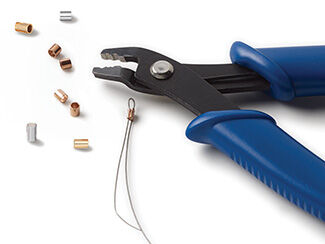Crimp Tubes
Crimp tubes are THE finding to keep your stringing projects intact and crimps have come a long way from the days of the little round piece of metal you "crush flat" to secure inflexible beading wire.


